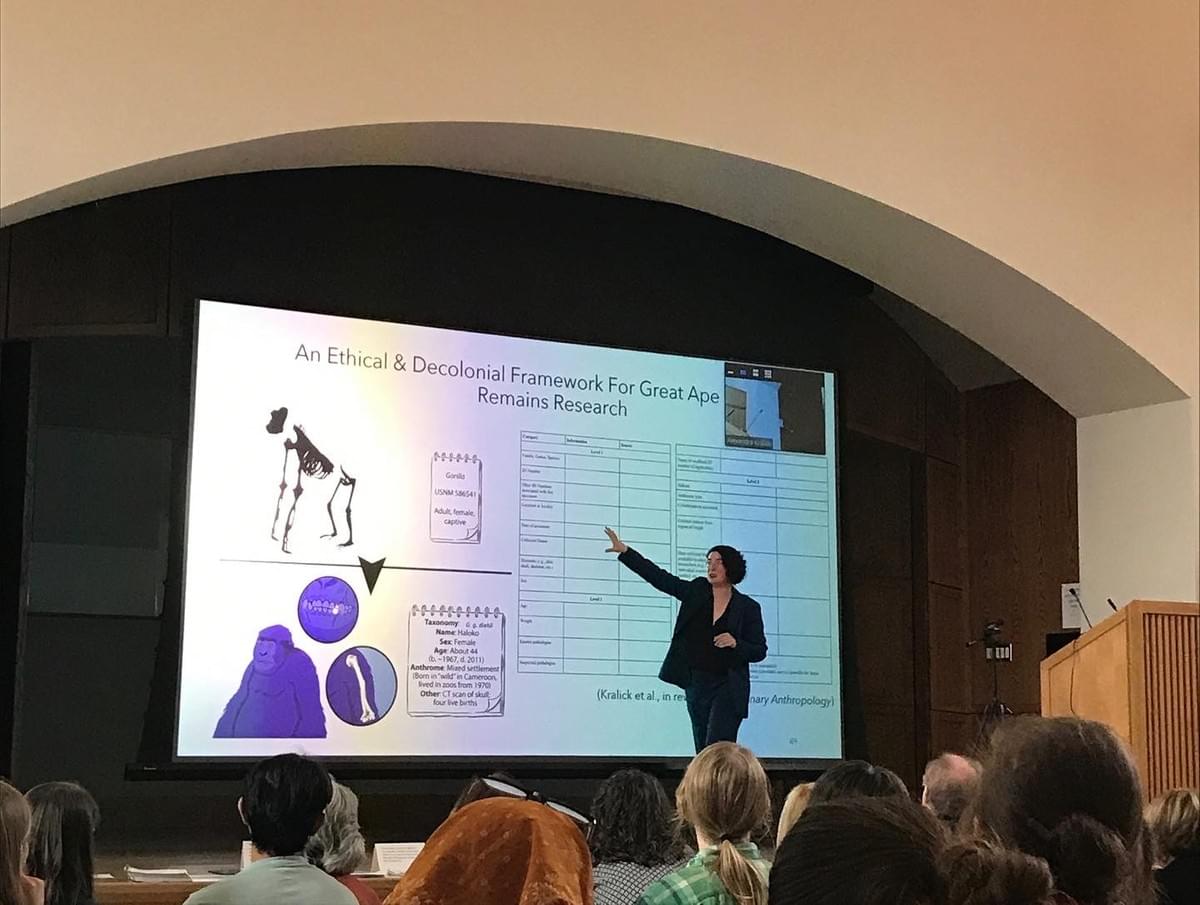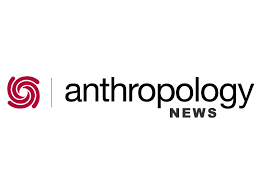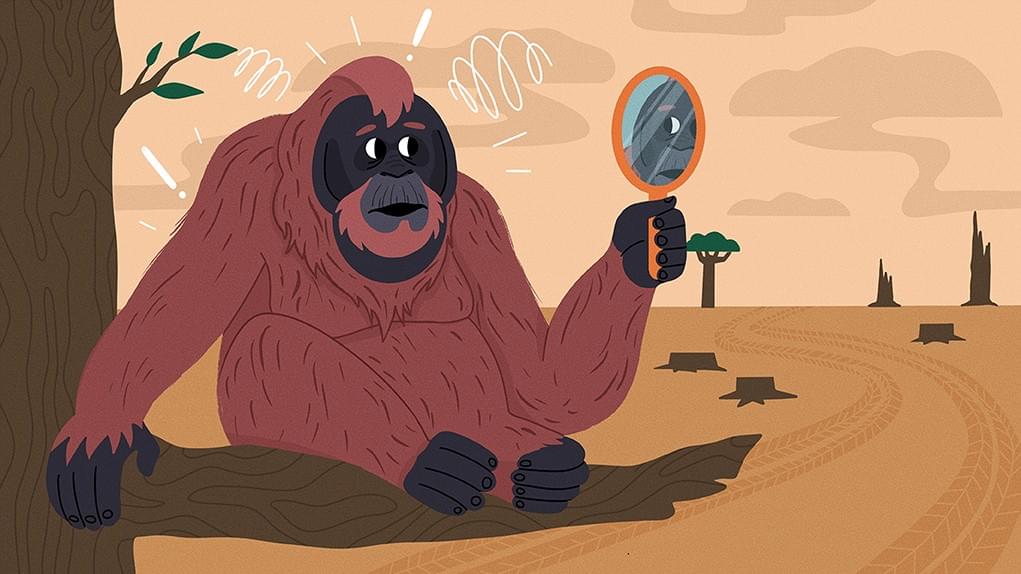
Alexandra E. Kralick, Ph.D.
An interdisciplinary biological anthropologist offering a creative, theoretically-engaged, innovative scientific inquiry into the growth and development and functional anatomy of biological sex variation in the ape skeleton.
Orangutan Osteology • Life History • Functional Morphology • Ethics of Great Ape Remains • Queer Feminist Biology
Bio

Dr. Alexandra Kralick is a Visiting Assistant Professor of Anthropology at Bryn Mawr College. A four-field trained biological anthropologist, her research examines sex based variation in the human and great ape skeleton.
Dr. Kralick’s work integrates contextual reflexivity, decolonial, and queer feminist theory into the study of great ape skeletal remains, with a focus on orangutans. Her research explores life history and functional morphology in orangutan skeletal development, particularly in relation to male bimaturism. She developed an osteobiographic method for identifying flanging status in museum collections.
She earned her Ph.D. from the University of Pennsylvania, where her dissertation examined orangutan skeletal development and variation. Previously, she was a postdoctoral fellow at Harvard University’s GenderSci Lab, where she investigated the intersections of gender and science. She holds a B.S. in Biological Anthropology from The George Washington University, where she studied gorilla dental development and wrist bone morphology.
Peer-Reviewed Publications
Alexandra E. Kralick, Babette S. Zemel, Clara Nolan, Phillip Lin, Matthew W. Tocheri. (2024). Relative leg-to-arm skeletal strength proportions in orangutans by species and sex. Journal of Human Evolution 188: 103496.
Specimens as individuals: Four interventions and recommendations for great ape skeletal collections research and curation
Alexandra E. Kralick, Stephanie Canington, Andrea Eller, and Kate McGrath.Specimens as Individuals: Four interventions and recommendations for great ape skeletal collections research and curation. (2023) Evolutionary Anthropology.1:20. doi: 10.1002/evan.22002
Beyond Dimorphism: Body Size Variation among Adult Orangutans is not Dichotomous by Sex
Open Access Publication available here
Alexandra E Kralick, Caitlin A O'Connell, Meredith L Bastian, Morgan K Hoke, Babette S Zemel, Theodore G Schurr, Matthew W Tocheri. (2023). Beyond Dimorphism: Body Size Variation among Adult Orangutans is not Dichotomous by Sex, Integrative and Comparative Biology, icad015, https://doi.org/10.1093/icb/icad015
Sex and Biology: Broader Impacts Beyond the Binary
Sam Sharpe, Andrew P.Anderson, Idelle Cooper, Alexandra E. Kralick, Timothy James, HansLindahl, Sara Lipshutz, J. F. McLaughlin, Banu Subramaniam, Alicia Roth Weigel,A. Kelsey Lewis. Sex and Biology: Broader Impacts Beyond the Binary. Integrative and Comparative Biology. 1:8. doi: 10.1093/icb/icad113
More severe stress markers in the teeth of flanged versus unflanged orangutans (Pongo spp.)
Alexandra E. Kralick and Kate McGrath. (2021). More severe stress markersin the teeth of flanged versus unflanged orangutans (Pongo spp.). American Journal of Physical Anthropology. 1:13. DOI: 10.1002/ajpa.24387
Faster growth corresponds with shallower linear hypoplastic defects in great ape canines
McGrath, K., Reid, D.J., Guatelli-Steinberg, D., Arbenz-Smith, K., El Zaatari, S., Fatica, L.M., Kralick, A.E., Cranfield, M.R., Stoinski, T.S., Bromage, T.G. and Mudakikwa, A., 2019. Faster growth corresponds with shallower linear hypoplastic defects in great ape canines. Journal of Human Evolution, 137, p.102691
Evolutionary perspectives on the developing skeleton and implications for lifelong health
Open access Publication available here
Alexandra E. Kralick and Babette S. Zemel. (2020). Evolutionary perspectives on the developing skeleton and implications for lifelong health. Frontiers in Endocrinology. 11: 99. doi: 10.3389/fendo.2020.00099
A radiographic study of permanent molar development in wild Virunga mountain gorillas of known chronological age from Rwanda
Alexandra E. Kralick, M. Loring Burgess, Halszka Golwacka, Keely Arbenz-Smith, Kate McGrath, Christopher B. Ruff, King Chan, Michael R. Cranfield, Tara S. Stoinski, Timothy G. Bromage, Antoine Mudakikwa, Shannon C. McFarlin. (2017). A radiographic study of permanent molar development in wild Virunga mountain gorillas of known chronological age from Rwanda. American Journal of Physical Anthropology. 163(1):129-147.
Public Science Communication
"Habitat Destruction Is Affecting The Facial Features Of Orangutans"
Frontiers for Young Minds is an open access scientific journal that brings the latest research in real time to school kids
Professor Kralick offers a variety of courses, covering a range of topics in biological anthropology.
The courses she has taught as instructor of record at Byrn Mawr College and University of Pennsylvania inlclude:
- Introduction to Human Evolution
- Introduction to Biological Anthropology and Anthropological Archaeology Laboratory
- The Living Primates: Bones Biology, and Behavior
- Gender and Human Evolution
- Sex, Gender, Biology, and Culture
- Biocultural Anthropology of Sex and Gender
- Myths of Human Nature
© 2022 by Alexandra Kralick
Photos are not for reproduction


























